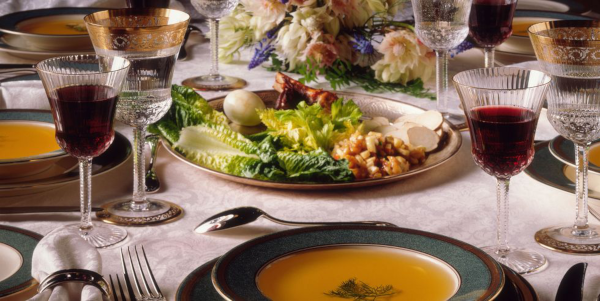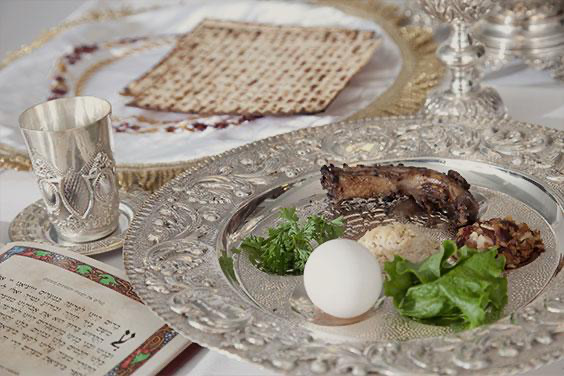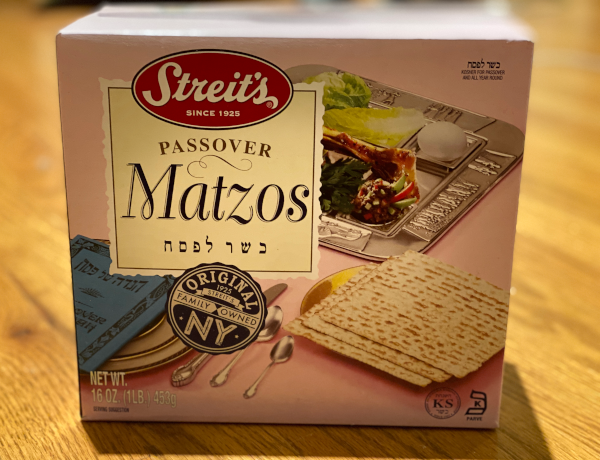Passover is the holiday when Jews throughout the world get together to celebrate the exodus from Egypt. It’s a time when we reflect on what it means to be free and we retell the Passover story, the magid, as a way to provoke new questions, to educate the youngest family members, and to keep the history alive.
This year, Jews are challenged with a different kind of Passover. Families are separated from one another and many of the traditions associated with the holiday, like welcoming strangers, are not possible and are certainly not advisable. The Passover dinner, the Seder, which initiates the holiday will have to be configured in a different way.
Passover is from April 8-16. How should we celebrate this year?
Importantly, we need to celebrate Passover. Passover refers to the final plague passing over the Jewish families in the days of Egypt. This year, we pray to have Passover relieve us from the plague of coronavirus and from the plague of social distancing. Our virtual Seders won’t be the same and they won’t be perfect. But the Passover story is an important one about resilience and success, and this year the freedoms we cherish matter more than ever. We can rely on our memories of Passovers past to guide us as we modify and adapt to our current reality.
The first Seder will be held on the evening of April 8 with many families celebrating a second one as well on April 9.
Making It Happen
This year, you’ll need to be a bit tech-savvy to bring the family together. The easiest way is via Zoom, the online meeting software that allows multiple people to be online at the same time. Download it onto your computer or phone from https://zoom.us/ or with the Zoom app and you’ll be ready to go. Then, someone can invite each participant with a link to join the meeting, or, in this case, the Seder. Click to join with video and sound and you’ll soon see everyone on your screen.
In addition to having someone coordinate the invitations, you’ll need to appoint someone to take charge of the order of the Seder, similar to how it would be done if you were sitting around a family table in one room. That person, the leader, will then call on participants to read sections from the Haggadah, which sets forth the order of the Seder and its contents, or ask attendees to comment on questions that will personalize the Seder for your family.
What Does a Seder Mean Right Now
In these unprecedented times, the Seder lends itself to many applications to the present. For example, when you discuss the ten plagues that Moses invoked on the Egyptians to convince Pharaoh to allow the Jews religious freedom, you might want to relate the plagues to what is happening right now with a different set of plagues: the plague of disease, the plague of scarcity of food and supplies, the plague of unemployment and so on.
The Four Cups of Wine take on new importance this year, too. Wine was considered a royal drink in the past, and hence drinking wine meant that you were free. While there is no concrete reason why we drink four cup at a Seder (or even three or two), we still need to remind ourselves that we are free, even though it may not seem that way right now. No one will argue that wine this year will also help us relax and recline (as you’re supposed to on Passover) during this difficult time.
There are numerous other opportunities to increase the relevance of the Passover story to our present situation.
A Seder by the Books
The contents of the Seder (which means order), can be found by downloading any number of Haggadot (try https://www.haggadot.com/clip-search for some suggestions or how to make your own). The Haggadah will help you track through the Seder’s dozen or so steps:
1. Candle Lighting
2. Blessing of the Wine (Kadesh)– drink the first cup of wine
3. Washing the Hands (Urhatz) – a perfect opportunity to mention why this is so important right now
4. Karpas – dipping greens into salt water as a symbol of Spring and new beginnings but marked by tears
5. Yahatz – with three pieces of matzoh, take the middle piece and break it in half, setting aside the larger piece as the afikoman (the final piece eaten as dessert). While this was said to symbolize the breaking of the Ten Commandments or the parting of the Red Sea when the Israelites fled Egypt, perhaps this “breaking” can refer to the “broken” existence that is now being shared throughout the world. It’s a perfect time to stop and reflect on what it means to you today.
6. Magid – the story of the Israelites’ exodus from Egypt. It includes the explanation of the symbolic items on the Seder plate (as best as you can create one), recitation of the Four Questions by the youngest present, traditional Passover songs and readings of a variety of explanatory passages. Drink the second cup of wine.
7. Washing the Hands – another 20-second reminder of what is happening at present.
8. Blessing the Matzoh (Hamotzi) – giving thanks that we have food to eat and can share it with our families and friends
9. Maror – eating something bitter like horseradish as a remembrance of the mortar that the Israelites used to build the bricks for the Egyptians’ buildings
10. Charoset – eating a sweet mix of apples, nuts, cinnamon and wine, together with some Maror on Matzoh, a Hillel sandwich, sweetness with a remembrance of bitterness. Perhaps you’d like to mention what you feel you’re missing at the moment? And what you’re grateful for?
11. Dinner – drink the third cup of wine
12. The tradition of Elijah’s Cup and Miriam’s Cup (pouring the Fifth cup of wine for Elijah and a cup of water for Miriam) – welcoming the prophet Elijah to the Seder and recognizing Miriam’s well that provided water for the Israelites while in the desert. The symbolism of Elijah as a virtual guest is more apparent than ever this year.
13. Conclude the Seder and drink the fourth cup of wine.
Making It Your Own
While some of these steps may be difficult to execute this year, you can adjust what you might remember from past Seders to the reality of what we have to use at this moment. It’s important to accept that you might not have a perfect Seder, and that’s fine. If you don’t have all the ingredients or you don’t have a Seder plate, you will still have a Seder as long as you come together and recite the Passover story.
The Seder can be as long as you want it to be, and you can choose to forego the order and leave the dinner part to the end if that works best for you, following the pre-meal steps of the Seder on Zoom and then signing off to dine. You could also decide to reconvene afterward to have some schmooze time and to reflect on what the closing statement, “Next Year in Jerusalem” might truly mean as we self-quarantine now and think ahead.




